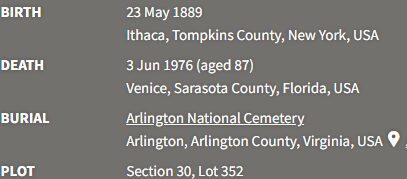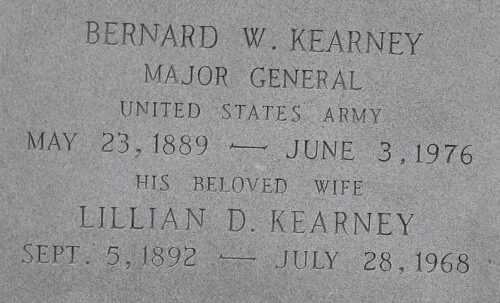Commanders of the 27th:
Hunter 6: MG Ralph McTyeire Pennell
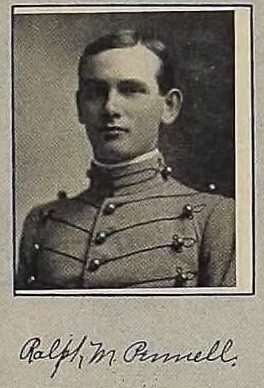
Major General Ralph McTyeire “Hap†Pennell was born in Belten, South Carolina, on August 15, 1882, and following graduation from the United States Military Academy was appointed a second lieutenant of Cavalry on June 12, 1906.
PROMOTIONS
Gen. Pennell was promoted to first lieutenant of Field Artillery on July 6, 1907; to captain on July 1, 1916; to major (temporary) on August 5, 1917; to lieutenant colonel (temporary) on the same date; and to colonel (temporary) on July 30, 1918. While serving as a temporary colonel he received his permanent promotion to major on February 24, 1920, to which grade he reverted on June 30, 1920. He was promoted to lieutenant colonel on January 21, 1930, to colonel on August 1, 1935, to brigadier general (temporary) on January 29, 1941, and to major general (temporary) on February 26, 1942.
SERVICE
Gen. Pennell first was assigned to the 13th Cavalry and served at the Mounted Service School at Fort Riley, from which he was graduated in July 1907, remaining at that post with the 6th Field Artillery. In July 1911 he was appointed Secretary of the School of Fire, Fort Sill, and served in that capacity until July 1915.
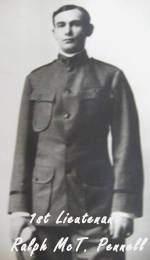
His next duty was with the 2nd Field Artillery in the Philippine Islands. He returned to the United States in June 1917, and following a month’s tour at El Paso, Texas, again became secretary and instructor at the School of Fire.
In April 1918 he became Assistant to the Chief of Artillery, Office of the Chief of Field Artillery. He then served three months (from September to December 1918) in command of the 34th Field Artillery at Camp McClellan, and in December 1918 began an inspection tour of England, France, Italy, and Germany as a member of the Armament Board, which continued until June 1919.
He spent the next five months in the office of the Chief of Field Artillery, then was assigned to Fort Sill, in command of the 1st Field Artillery, concluding this duty in September 1922.
In August 1923 Gen. Pennell completed the course at the Command and General Staff School as a Distinguished Graduate, and was assigned as Executive Officer of the 1st Field Artillery Brigade, Fort Hoyle. From February 1924 until August 1926, he served successively as liaison officer in the office of the Chief of Field Artillery, and at the Aberdeen Proving Ground, then enrolled in the Army War College. After graduating in June 1927, he entered the Naval War College, completing the course in September 1928.
Gen, Pennell was detailed to duty with the Hawaiian Division at Schofield Barracks and returned to the United States in December 1930 for assignment at the headquarters of the Eighth Corps Area, Fort Sam Houston, In September 1932 he became Battalion Commander with the 15th Field Artillery at Fort Sam Houston, and assumed command of this regiment in February 1935. Four months later he was transferred to Fort Bragg as a member of the Field Artillery Board. He became President of the Field Artillery Board in July 1936.
He was again assigned to command the 15th Field Artillery at Fort Sam Houston in July 1939. Following a refresher course at the Field Artillery School from September to November 1939, he went on detached service at Fort Sill. He was assigned to the 27th Division at Fort McCellan in October 1940 and became Commanding general of the 27th Division with new headquarters at Fort Ord in March 1942.
Subsequently he was given an unannounced overseas assignment, then returned to the United States in October 1942 and was assigned to the War Department Dependency Board, Newark, New jersey. In March 1943 he was named Commanding General of the Field Artillery Replacement Training Center at Fort Sill. In November 1944 he became commandant of the Field Artillery School.
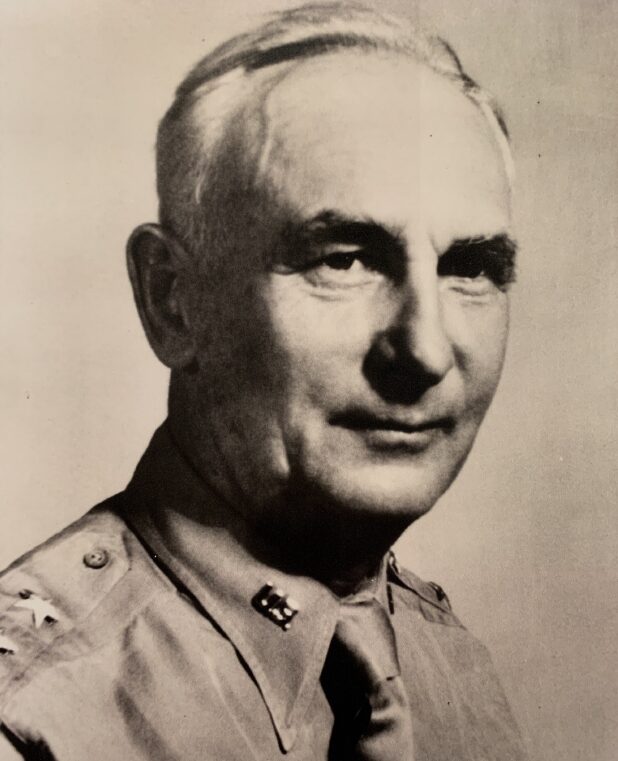
DECORATIONS
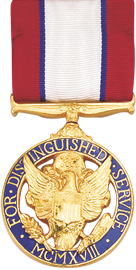
For his services during World War I he was awarded the Distinguished Service Medal with the following citation:
“As assistant to the Chief of Field Artillery from April 16, 1918, to September 4, 1918, he planned and executed those measures which provided a balanced production of different types of field artillery materiel and equipment and the selection of the types to be produced, and which determined the priorities of distribution of the same.”
He received the Oak Leaf Cluster to the Distinguished Service Medal in 1942 with the following citation:
“For exceptionally meritorious and distinguished service in a position of great responsibility as Commanding General of an Infantry Division in the Hawaiian Department during the period of March 15, 1942 to November 1, 1942. By outstanding ability, leadership, and energy he brought his Division to a high degree of training and readiness for combat conditions. He showed remarkable ability in the disposition of his troops and in the location of positions with his command. As a representative of the Military Governor of the island of Hawaii, he personally solved the problems concerned with the government of this island, which has a large alien and alien descent population. By reason of his qualities as an officer, a very difficult situation was handled in a superior manner and military-civilian relationships were greatly improved.â€
He retired in March of 1946 and passed away in May of 1973. He is buried in the Cemetery at Fort Sill, Oklahoma.
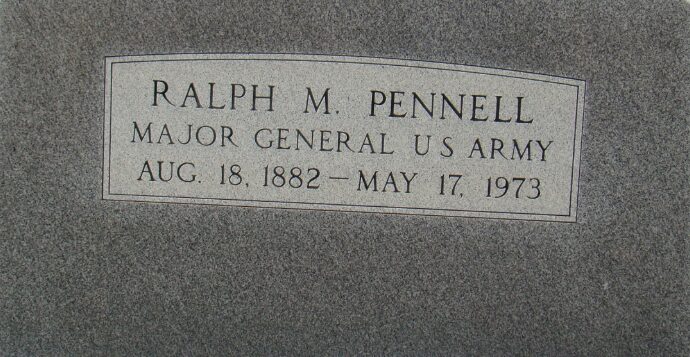
————————- ♦ ————————-
References used:
The Field Artillery Journal, January; 1945 edition
Hunter 6: MG Ralph C. Smith
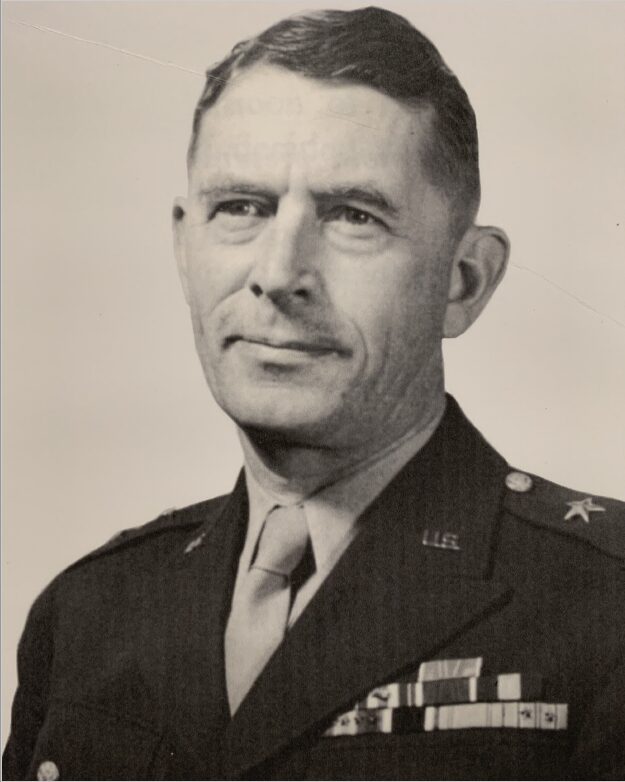
Perhaps the second best known commander of the 27th Division after MG John F. O’Ryan, MG Ralph C. Smith is also perhaps the most infamous. There have been many studies about the “Smith versus Smith†situation during the struggle for Saipan. I will link to them at the end of this biographical sketch. Regardless of any shadow on his legacy, it cannot be denied that he was quite a Soldier and leader. This brief glimpse at his career is hopefully something that will interest lovers of 27th lore.
Maj. Gen. Ralph Corbett Smith, a rugged Nebraskan who was decorated for bravery in World War I, commanded an infantry division in combat in the Pacific in World War II and became the oldest surviving general officer of the United States Army, died on Wednesday at his home in Palo Alto, Calif. He was 104.
The cause of death was a lung ailment, said a friend, Roger Mansell.
General Smith was also an early aviator and was given flying lessons, as a young officer, by Orville Wright, Mr. Mansell said, and his pilot’s license, signed by Wright, bore the number13, because he was the 13th person to receive one.
In later years, when asked how he achieved such great age, General Smith used to say wryly: ”I get up in the morning and I’m still here. That’s how I got this way.”
He was born in South Omaha, Nebraska, was raised partly in Colorado, attended Colorado State College, and served in the Colorado National Guard. He was commissioned a second lieutenant in the Army in 1916 and was involved in the Army’s unsuccessful punitive expedition — whose commanding general was John J. Pershing — against Francisco Villa, the Mexican revolutionary known as Pancho, just before the United States entered World War I.
In that war the future general Smith won the Silver Star with an Oak-Leaf Cluster for two instances of bravery with the Infantry in France. He served with the 16th Infantry Regiment as part of the 1st Infantry Division. Later transferring to the 4th Infantry Division. He later served as part of the Occupation forces in Germany. He was wounded in action in the Meuse-Argonne offensive in 1918.
Between the world wars his duties including teaching at West Point and attending, and then instructing, at the Command and General Staff College at Fort Leavenworth, Kansas. He also attended both the US Army War College and the French l ’Ecole de Guerre in Paris. He held several commands, including that of the Presidio of San Francisco.
He was a temporary colonel when the United States entered World War II.
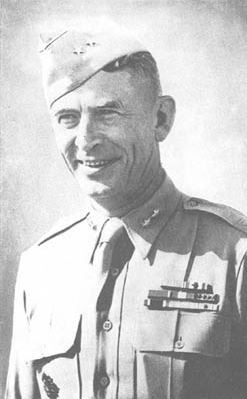
In 1942, he became a major general and took command of the 27th Infantry Division. In 1943, troops of his division captured Makin Atoll — in the Gilbert Islands in the Pacific — which became the first central Pacific Island to be reconquered by the Allies.
In 1944, the general’s division took part in the hard struggle for the mountainous island of Saipan in the western Pacific. But he was relieved of his command by Lieut. Gen. Holland M. Smith of the U.S. Marine Corps, commander of the Fifth Amphibious Corps, who contended that the 27th Division had ”failed to attack on time.”
Ralph Smith was given command of the 98th Infantry Division charged with the defense of the Hawaiian Islands, but the negative publicity associated with his firing on Saipan made it impractical for him to remain in the Pacific Theater. He was thus transferred to Camp J.T. Robinson, Arkansas, where he supervised the Infantry Replacement Training Center.
An all-Army board of inquiry (the Buckner Board) later exonerated Gen. Ralph Smith, and he went on to be military attaché at the United States Embassy in Paris and CARE’s chief of mission for France. While he worked for Cooperative for American Remittances to Europe (CARE) he also oversaw operations in other western European countries.
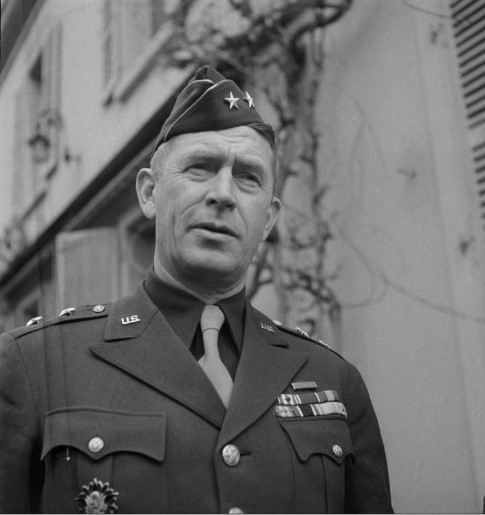
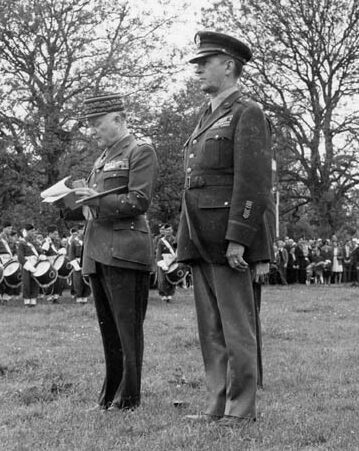
After retiring from the Army in 1946, General Smith was a fellow at Stanford University’s Hoover Institute on War, Revolution and Peace.
He earned the Silver Star with Oak Leaf Cluster, a Purple Heart, and a French Croix de Guerre with Palme. The other honors he received included the Legion of Merit with Oak Leaf Cluster, French Commandeur de Legion d’Honneur, British Companion of the Bath, Belgian Commandeur of the Ordre de Leopold II.
His first wife, Madeleine, died in 1975. He married Hildy Jarman in 1980 and she died in 1995. He is survived by three grandchildren and six great-grandchildren.
Promotions
1938-10-01 Lieutenant-Colonel
1941-10-14 Colonel (Army of the United States)
1942-04-16 Brigadier-General (Army of the United States)
1942-10-26 Major-General (Army of the United States)
1946-10-30 Termination of rank Major-General (Army of the United States)
1946-10-30 Termination of rank Brigadier-General (Army of the United States)
1946-10-31 Colonel (Retired)
Service
1942-XX-XX Assistant Commanding General 76th Infantry Division
1942-11-XX – 1944-06-XX Commanding General 27th Infantry Division
1944-07-15 – 1944-08-30 Commanding General 98th Infantry Division [Pacific]
1944-07-16 – 1944-08-27 Commanding General Kauai District
1945-02-13 – 1946-06-11 Military Attaché to France
1946-10-31 Retired
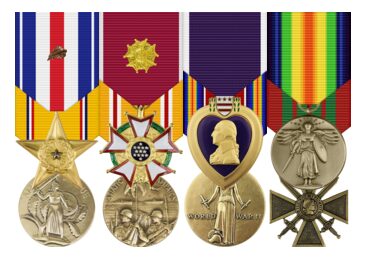
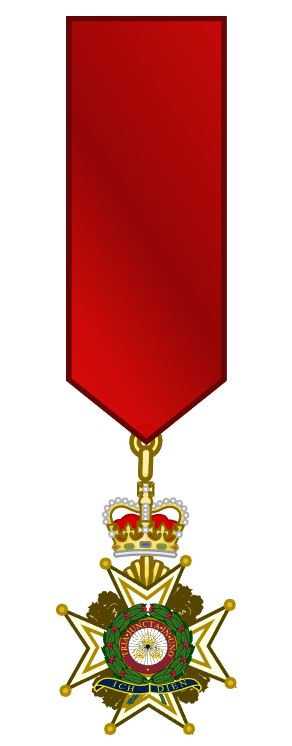
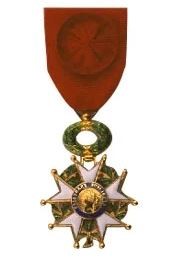
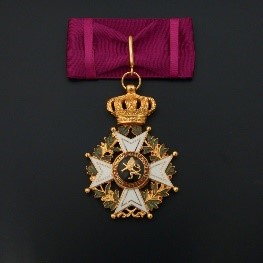
https://en.wikipedia.org/wiki/Ralph_C._Smith
https://www.fold3.com/memorial/461916855/ralph-corbett-smith/gallery
https://www.latimes.com/archives/la-xpm-1998-jan-24-mn-11614-story.html
MG Bernard Kearney (1947-1948)
Hunter 6 (1947-1948): MG Kearney
Bernard William “Pat” Kearney (May 23, 1889 – June 3, 1976) was a Republican member of the United States House of Representatives from New York and a longstanding member of the New York National Guard.
“Pat” Kearney was born in Ithaca, New York on May 23,1889, the son of Patrick B. Kearney, a clothier, and Josephine M. (Oster)Kearney. He graduated from Albany Law School in 1914 and became an attorney. Kearney graduated from Albany Law School in 1914 and continued his path in law, practicing in the counties of Hamilton and Fulton in New York State. He served as city judge for Gloversville for two terms, lasting from 1920 to 1924. He served as Assistant District Attorney of Hamilton County from 1924 to 1929, and Fulton County from 1929 to 1931. He was Fulton County District Attorney from 1931 to1942.
He served in the New York National Guard from 1909 until 1917, first as a member of Company G, 2nd New York Infantry, and then with Troop B, 1st New York Cavalry.
He served on the border with Mexico during the Pancho Villa Expedition, attended Officer Training School at Fort Niagara and received his commission in 1917.
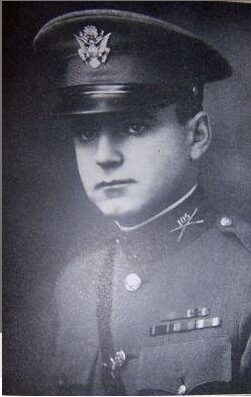
Kearney served in France as a member of units in the 27th Division during World War I, and saw combat at St. Mihiel and Meuse-Argonne. He received the French Legion of Honor (Officer) and Croix de Guerre.
He continued his National Guard service after the war, commanding the105th Infantry Regiment as a Colonel, and the 53rd Infantry Brigade as a Brigadier General. He retired from the National Guard in 1940. Active in veterans’ organizations, Kearney served as National Commander of the Veterans of Foreign Wars from 1936 to1937.
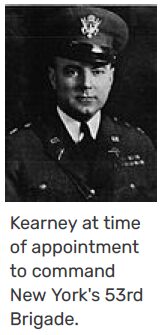

During World War II Kearney commanded a brigade in the New York Guard, the volunteer organization that performed the New York National Guard’s stateside functions while National Guard soldiers were serving overseas. When the 27th and 42nd Infantry Divisions were fielded in New York a part of the National Guard’s post-war reorganization, Kearney was recalled from retirement, promoted to Major General, and assigned as commander of the 27th Division. He retired again in 1948.
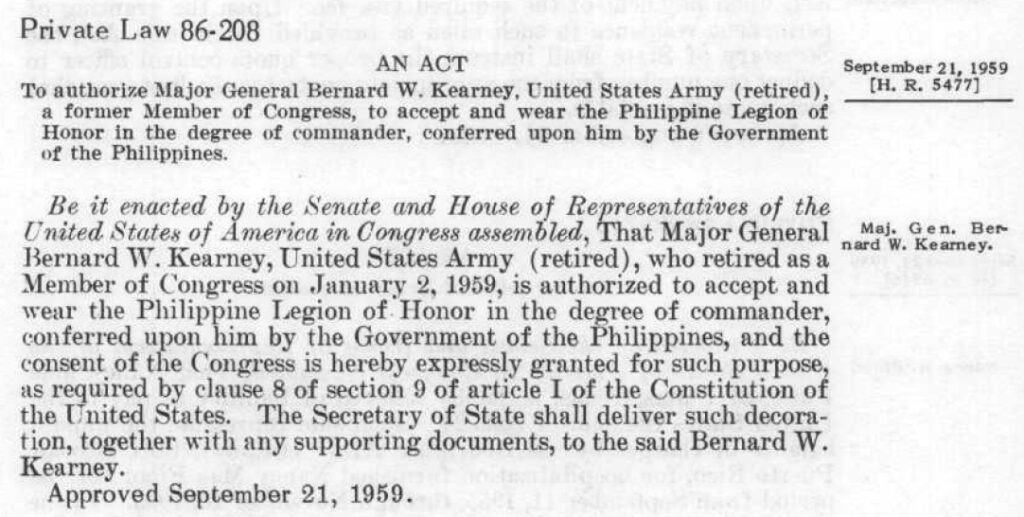

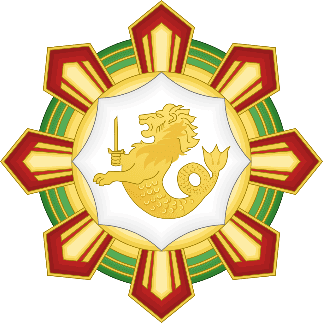
——————– ♦ ——————–
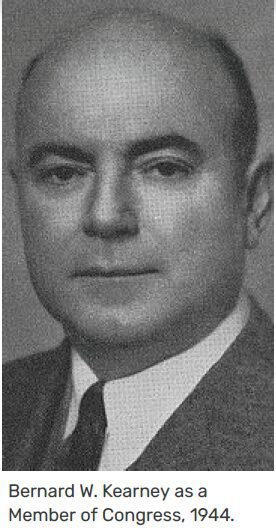
Kearney was elected to the United States House of Representatives in 1942, and served eight terms, January 3, 1943 to January 3, 1959. He rose to become the ranking Republican member of the House Un-American Activities Committee, and developed a reputation as a staunch anti-communist. His major legislative accomplishment was co-authorship and passage of the GI Bill to benefit veterans returning from World War II. This bill allowed veterans to receive low-interest loans, one year of unemployment compensation at $20 per week, and cash payments to attend college. This bill not only helped veterans— it was seen as an attempt to avoid another depression following war, and therefore helped with social and economic problems that were beginning to rise in the country. Kearney was also given credit for having suggested the law’s title. When the GI Bill was in front of Congress, there was controversy over the social impacts of the bill, as some believed it would encourage veterans to remain unemployed. If it weren’t for Kearney, who served as a member of the House of Representatives from 1942 to 1959, it may not have been passed. The bill was deadlocked in a congressional committee, and in order to break the tie, Kearney desperately sought Frank Gibson, a member of the committee who had returned to Georgia. Kearney believed that his vote would help pass the GI Bill into law. He found Gibson with the help of local police and rushed the congressman back to Capitol Hill, just in time for the vote that landed in the GI Bill’s favor.
Kearney voted in favor of the Civil Rights Act of 1957.
[Video of Brigadier General Kearney at dedication of American cemetery at Montsec, France in 1937. BG Kearney’s remarks at 5:22 mark.]
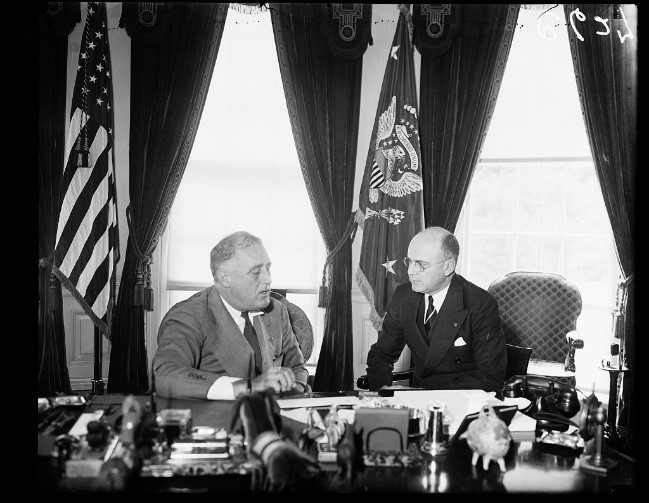
Congressman Kearney with President Franklin D. Roosevelt

Portrait that hangs in the Kearney Conference room at Gloversville Armory.
In retirement he was a resident of Canandaigua, New York, and Venice, Florida. He died in Venice in 1976, and was buried at Arlington National Cemetery.
